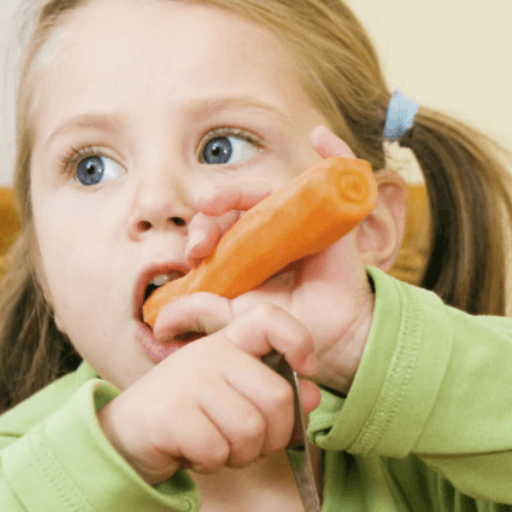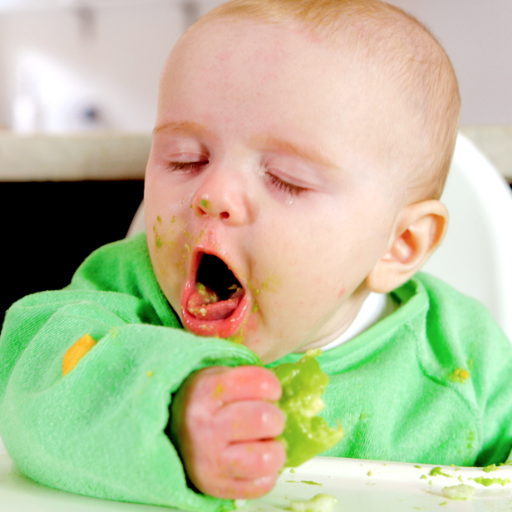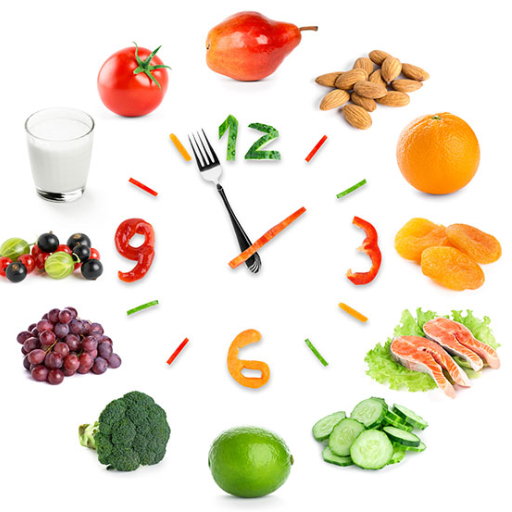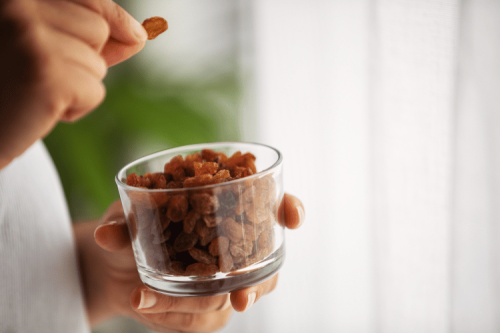
Choking continues to be a major risk for children, especially those aged three years and below. Infants and toddlers tend to put objects into the mouth parts of their bodies, which makes them susceptible to choking incidents. The purpose of this article is to familiarize parents with the most common items that pose choking hazards, along with useful tips to avoid any incidents. As a thorough review of potential dangers related to food as well as external objects is conducted, parents and guardians will be able to better shield their children from risks. This authoritative guide employs a variety of sophisticated terminologies that are backed by recent research and expert opinions in this area to ensure the presentation of the material is straightforward and practical in helping safeguard children from choking risk.
 The most common choking risks in infants and toddlers are hard and round-shaped small food items, which include nuts, whole grapes, popcorn, and even raw vegetables such as carrots. Even certain non-edible items such as buttons, small toys, coins, and batteries can be quite dangerous because of the fact that they are small in size and shape. While eating, children should always be supervised, and safety precautions such as breaking food into smaller pieces or using toys suitable for their age must always be taken to avoid cases of choking.
The most common choking risks in infants and toddlers are hard and round-shaped small food items, which include nuts, whole grapes, popcorn, and even raw vegetables such as carrots. Even certain non-edible items such as buttons, small toys, coins, and batteries can be quite dangerous because of the fact that they are small in size and shape. While eating, children should always be supervised, and safety precautions such as breaking food into smaller pieces or using toys suitable for their age must always be taken to avoid cases of choking.
 As per the guidance offered by experts in the area of child choking prevention, it can be understood that combating choking in young children involves a range of practices, including proper supervision, education, and altering the environment. Parents are then implored to supervise children during mealtimes and times spent in play on a consistent basis, explaining to them what constitutes the right form of food, which is soft, cut into small pieces, and nonsticky. In addition, undertaking regular checks of the house for small items like toys, coins, and batteries and placing them at a safe distance from children’s reach is essential. One example of how to ensure this is by testing the size of the toys using the toilet paper roll test, which is a good way to evaluate the safe size of toys. You will also have to bear in mind that apart from the above parents should enroll in first aid classes emphasizing choking as well as make efforts to regularly communicate safety procedures. All in all, awareness amongst parents goes a long way in the lowering of the number of choking cases ensuring that they live in a safe environment.
As per the guidance offered by experts in the area of child choking prevention, it can be understood that combating choking in young children involves a range of practices, including proper supervision, education, and altering the environment. Parents are then implored to supervise children during mealtimes and times spent in play on a consistent basis, explaining to them what constitutes the right form of food, which is soft, cut into small pieces, and nonsticky. In addition, undertaking regular checks of the house for small items like toys, coins, and batteries and placing them at a safe distance from children’s reach is essential. One example of how to ensure this is by testing the size of the toys using the toilet paper roll test, which is a good way to evaluate the safe size of toys. You will also have to bear in mind that apart from the above parents should enroll in first aid classes emphasizing choking as well as make efforts to regularly communicate safety procedures. All in all, awareness amongst parents goes a long way in the lowering of the number of choking cases ensuring that they live in a safe environment.
 It’s vital to understand that the first approach to squashing an opportunity to choke in infants and toddlers would require you to recognize the signs of choking efficiently and on time. Coughing or gagging may be the first few indicators if the airway is at least partially blocked. The offense is capable of extending beyond the striking pain, which can leave a child quiet. In fact, a mute child is likely to have woken up from sleep silently due to irritation. Signs such as bloodless or slightly blue skin and the urge to hold one’s throat without having the ability to make any noise are a few other indicators to look for. When it comes to prevention, time is of the essence as the child’s life can depend on how quickly the measures are adopted. Understanding these warning signs can help you in preventing choking situations with ease. Even so, there’s room to spare in that self-narratives are formed, which helps broaden one’s vision.
It’s vital to understand that the first approach to squashing an opportunity to choke in infants and toddlers would require you to recognize the signs of choking efficiently and on time. Coughing or gagging may be the first few indicators if the airway is at least partially blocked. The offense is capable of extending beyond the striking pain, which can leave a child quiet. In fact, a mute child is likely to have woken up from sleep silently due to irritation. Signs such as bloodless or slightly blue skin and the urge to hold one’s throat without having the ability to make any noise are a few other indicators to look for. When it comes to prevention, time is of the essence as the child’s life can depend on how quickly the measures are adopted. Understanding these warning signs can help you in preventing choking situations with ease. Even so, there’s room to spare in that self-narratives are formed, which helps broaden one’s vision.
 The proper food preparation and adequate serving techniques are, according to the recommendations of certain industry professionals, part of the work to be done in mitigating the risk of choking. Slicing the food into small, bite-sized pieces that are easy for a child to chew and swallow is suggested. Whole high-risk foods like grapes, hot dogs, or cherry tomatoes should never be offered; instead, they should be cut into smaller pieces. Round-shaped food items should be cut into quarters so as to reduce the risk of them getting stuck in the windpipe. Furthermore, nuts, popcorn, and hard candies should not be easily accessible since they are harmful choking risks. Start with the kinds of texture that suit the developmental stage of the child, since the earlier the child progresses from pureed foods to moderately solid foods, the better. Last but not least, tell the child to sit still, focusing on their food until they finish the meal to prevent themselves from choking. By taking proper cautionary measures, you can reduce the amount of choking risks present at the supper table considerably.
The proper food preparation and adequate serving techniques are, according to the recommendations of certain industry professionals, part of the work to be done in mitigating the risk of choking. Slicing the food into small, bite-sized pieces that are easy for a child to chew and swallow is suggested. Whole high-risk foods like grapes, hot dogs, or cherry tomatoes should never be offered; instead, they should be cut into smaller pieces. Round-shaped food items should be cut into quarters so as to reduce the risk of them getting stuck in the windpipe. Furthermore, nuts, popcorn, and hard candies should not be easily accessible since they are harmful choking risks. Start with the kinds of texture that suit the developmental stage of the child, since the earlier the child progresses from pureed foods to moderately solid foods, the better. Last but not least, tell the child to sit still, focusing on their food until they finish the meal to prevent themselves from choking. By taking proper cautionary measures, you can reduce the amount of choking risks present at the supper table considerably.
 In your own clinical experience as a practitioner in the field, there are some items that we should be firmly aware of as a choking hazard to a baby aged four or younger. These include a number of small foods such as whole grapes, nuts, some meats, raw vegetables, popcorn, and hard candies, among others, that may cause obstruction of a child’s airway, especially a young child. Also, as for nonfood items, these toys, balloons, and coins are a great choking hazard for the baby as well due to their size and shape. It is essential that these potential hazards are kept out of reach as this would effectively minimize the chances of choking, which is a major concern for many people.
In your own clinical experience as a practitioner in the field, there are some items that we should be firmly aware of as a choking hazard to a baby aged four or younger. These include a number of small foods such as whole grapes, nuts, some meats, raw vegetables, popcorn, and hard candies, among others, that may cause obstruction of a child’s airway, especially a young child. Also, as for nonfood items, these toys, balloons, and coins are a great choking hazard for the baby as well due to their size and shape. It is essential that these potential hazards are kept out of reach as this would effectively minimize the chances of choking, which is a major concern for many people.
What Are the Common Choking Hazards for Babies and Toddlers?
 The most common choking risks in infants and toddlers are hard and round-shaped small food items, which include nuts, whole grapes, popcorn, and even raw vegetables such as carrots. Even certain non-edible items such as buttons, small toys, coins, and batteries can be quite dangerous because of the fact that they are small in size and shape. While eating, children should always be supervised, and safety precautions such as breaking food into smaller pieces or using toys suitable for their age must always be taken to avoid cases of choking.
The most common choking risks in infants and toddlers are hard and round-shaped small food items, which include nuts, whole grapes, popcorn, and even raw vegetables such as carrots. Even certain non-edible items such as buttons, small toys, coins, and batteries can be quite dangerous because of the fact that they are small in size and shape. While eating, children should always be supervised, and safety precautions such as breaking food into smaller pieces or using toys suitable for their age must always be taken to avoid cases of choking.
Understanding Choking Hazards for Babies
I would like to start with a risk assessment of this topic. How complexities are present in the Infant and Toddler Choking Hazard. Let’s start with some physiological differences children have, which include narrow airways and less coordinated swallowing with age. This makes children to be prone to such scary incidents. Let us keep in mind while working that this is an experience I bear, so reiterating at this point; I emphasize the importance of preventive measures like conducting regular assessments of the safety standards in the play areas and the supervision children have during meal times. This leads us further to the importance of evaluating the size, shape, and texture of children's toys and food items for minimal risks. There is a considerable volume of evidence that education is effective in empowering the caregivers of children, and this is also the reason why training to perform basic first aid, including response to choking, is of very high importance. To summarize my points on this specific subject, I encourage them to share knowledge and make necessary changes according to the age level of every child to better enhance their safety and security.Identifying Choking Risks in the Home Environment
The exploration of a child’s choking hazards in the domestic setting is an indispensable step in their safety. I will start by simplifying the process of locating these threats for you.- Inspecting Toys: To start with, the first consideration is the dimensions and configuration of the toys. Firstly, toys should be of such size that a child cannot swallow them, and the size cannot be smaller than a tube of a toilet paper roll. This test can inform whether a toy is safe for a pre-schooler as it enables the determination of the risk of choking.
- Managing Food-Related Risks: The practice incorporates strategies of harvesting, production and consumption of food. Common choking hazards that are associated include nuts, popcorn, grape as well as vegetables. Always make sure to cut such items into small portions which can be chewed by a young child. Further, there is reduction of risk as food should be of that nature which can be easily mashed on the gums.
- Assessing Household Items: Everyday household stuff such as batteries, and buttons and small items such as coins are also choking hazards which go unnoticed. Always keep such items out of the reach of children. When you are looking in your home, look for items which may have the potential of destruction.
- Securing Access to Packaging and Bags: Balloons that are not blown up and plastic bags are deflated and scraps can cause suffocation. It is best to throw such items immediately after use and store the remaining away from the reach of children.
Foods to Avoid for Infants and Children
I would emphasize the importance of avoiding particular food items that could lead to choking in toddlers. Including but not limited to whole dry nuts, popcorn kernels, and hard, shiny candy can be harmful as they are quite small and can go down the airway, causing an obstruction. Though it is difficult to imagine, it is highly recommended to cut hot dogs, grapes, and cherry tomatoes before serving them to children as they are high-risk foods when rounded and not sliced into pieces because there is a chance they might become lodged in the child’s throat during consumption. Additionally, raw vegetables should be finely chopped or cooked until soft in order to minimize the risk of choking. Surprisingly, foods like marshmallows and peanut butter are sticky and should also be avoided as they have a high chance of inducing choking. Therefore, close attention must be paid to food textures and sizes appropriate for young children. Provided children are supervised and monitored with careful cooking choices offered at the table, I see no harm with kids eating, as it will be an enjoyable moment for both parents and kids.How Can Parents Prevent Choking in Young Children?
 As per the guidance offered by experts in the area of child choking prevention, it can be understood that combating choking in young children involves a range of practices, including proper supervision, education, and altering the environment. Parents are then implored to supervise children during mealtimes and times spent in play on a consistent basis, explaining to them what constitutes the right form of food, which is soft, cut into small pieces, and nonsticky. In addition, undertaking regular checks of the house for small items like toys, coins, and batteries and placing them at a safe distance from children’s reach is essential. One example of how to ensure this is by testing the size of the toys using the toilet paper roll test, which is a good way to evaluate the safe size of toys. You will also have to bear in mind that apart from the above parents should enroll in first aid classes emphasizing choking as well as make efforts to regularly communicate safety procedures. All in all, awareness amongst parents goes a long way in the lowering of the number of choking cases ensuring that they live in a safe environment.
As per the guidance offered by experts in the area of child choking prevention, it can be understood that combating choking in young children involves a range of practices, including proper supervision, education, and altering the environment. Parents are then implored to supervise children during mealtimes and times spent in play on a consistent basis, explaining to them what constitutes the right form of food, which is soft, cut into small pieces, and nonsticky. In addition, undertaking regular checks of the house for small items like toys, coins, and batteries and placing them at a safe distance from children’s reach is essential. One example of how to ensure this is by testing the size of the toys using the toilet paper roll test, which is a good way to evaluate the safe size of toys. You will also have to bear in mind that apart from the above parents should enroll in first aid classes emphasizing choking as well as make efforts to regularly communicate safety procedures. All in all, awareness amongst parents goes a long way in the lowering of the number of choking cases ensuring that they live in a safe environment.
Practicing Effective Choking Prevention Strategies
I focus on making the issue of getting choked explained and actionable in a much simpler manner to the parents and caretakers. In relation to young children, there are best practices that have to be followed:- Supervision During Meals and Play: Maintain constant supervision of the children as they eat and play. This is the easiest solution to developing choking episodes since adults can promptly act when a child starts to show distress signs.
- Modify Food Preparation: Always cut foods into smaller and more manageable portions and soften them if they are too hard before giving them to children. The foods should also not be excessively sticky or too chewy. For example, grapes should be semi-sliced, hot dogs cut longitudinally and then sliced across.
- Regular Safety Audits: Regularly inspect the environment at home. Look for loose coins, small toys, or batteries, as they may pose choking risks, and inspect children's fingerboards for choking hazards using the TP tube test.
- Educate and Engage: Make it a point to understand dangers particularly discussing children's safety and participate in first-aid courses that deal with the Heimlich manoeuvre and CPR for children. Knowledge enables you to take action where required decisively.
- Childproofing the Environment: Forms of cabinet locks and storage places like high shelves should be employed to prevent children from reaching such risky items. This infrastructure helps prevent children to such small items which can be more fatal.
Modifying Foods for Babies and Toddlers
I want to ensure you understand how to properly and safely prepare food for toddlers and babies . Here’s how to modify foods to avoid choking hazards and promote a healthy meal setting:- Size: Always ensure that food is cut into small, manageable pieces. For instance, hot dogs should be sliced in half lengthwise and then crosswise, while grapes and cherry tomatoes should be cut into quarters. This makes it difficult for food particles to completely block the airway.
- Texture: Vegetables should be boiled to make them tender, while soft fruits can be purchase,d which is ideal for babies and toddlers to gently chew or gum. Softer textures reduce the risk of choking as such items can be broken down more easily.
- Stickiness: Foods like peanut butter that are too sticky or smear a person’s throat should be avoided. If you add in sticky textured foods include it in a slice of bread, or mix it with other foods to change its viscosity.
- Shape: Some foods have round hard dense parts such as whole grapes which can block the airway, therefore it is crucial for them to be sliced or ground. Dense parts of food are more likely to cause a child to choke.
- Preparation: Steaming or cooking hard vegetables such as carrots is recommended as it makes them easier to digest for little ones. Not only does this reduce the risk of choking, it further eases the processes of young children.
Creating a Safe Eating Environment for Kids
The doing of the child’s meal involves several activities, both preventative and definitive, and as such, I think creating an eating aid for children starts in the industry. Children should be encouraged to eat their meals in designated calm areas that are free from several distractions, such as toys and screens. The order is also beneficial, as the children focus on their meal. Proper choking prevention should be observed through proper seating arrangements whereby children’s adults-sized high chairs and secure arrangements are used for trucking them into an upright position, thus allowing proper swallowing. Always set clear and regular ways of eating, for example, enforcing small portions and chewing several times in order to avoid eating too fast. Tell the kids that they shouldn’t talk with their mouths full since half attention will be given to the task being done. Overall, it makes sense to exercise restrain and removing chaos in certain situations ensures eating by children is more bearable.What Are the Signs of Choking in Babies and Toddlers?
 It’s vital to understand that the first approach to squashing an opportunity to choke in infants and toddlers would require you to recognize the signs of choking efficiently and on time. Coughing or gagging may be the first few indicators if the airway is at least partially blocked. The offense is capable of extending beyond the striking pain, which can leave a child quiet. In fact, a mute child is likely to have woken up from sleep silently due to irritation. Signs such as bloodless or slightly blue skin and the urge to hold one’s throat without having the ability to make any noise are a few other indicators to look for. When it comes to prevention, time is of the essence as the child’s life can depend on how quickly the measures are adopted. Understanding these warning signs can help you in preventing choking situations with ease. Even so, there’s room to spare in that self-narratives are formed, which helps broaden one’s vision.
It’s vital to understand that the first approach to squashing an opportunity to choke in infants and toddlers would require you to recognize the signs of choking efficiently and on time. Coughing or gagging may be the first few indicators if the airway is at least partially blocked. The offense is capable of extending beyond the striking pain, which can leave a child quiet. In fact, a mute child is likely to have woken up from sleep silently due to irritation. Signs such as bloodless or slightly blue skin and the urge to hold one’s throat without having the ability to make any noise are a few other indicators to look for. When it comes to prevention, time is of the essence as the child’s life can depend on how quickly the measures are adopted. Understanding these warning signs can help you in preventing choking situations with ease. Even so, there’s room to spare in that self-narratives are formed, which helps broaden one’s vision.
Recognizing Choking First Aid Signals
Expert medical knowledge reveals the need to have a basic understanding of the first aid signals associated with choking in infants and toddlers. Some of the indicators that have to be noted include the inability to produce crying or sound of any kind such that breathing becomes impossible, along with mechanical asphyxia more severe than noted before, as well as some onset of respiratory distress with cyanosis. An infant does, within a very short time, become irritable or even more with some striking features, including but not limited to swallowing reflexes as well as continuous attempts to touch or grab the throat with both hands. They may also cough several times in series in case of a slight obstruction. Quick action is required in such cases; there are simple first aid approaches that can be termed as drastic measures, including blows on the back and thrusts on the abdomen, but their application has to be made carefully and exactly with the specified timing.Steps to Take When a Child is Choking
Being an industry expert in child safety concerned about children's safety, I know that in case a child is choking, he needs immediate and composed handling. So here are the steps I recommend:- Assess the Situation: Identify promptly if child has partial or complete obstruction. In this case, if they have adequate cough, voice or make sounds, it's not worrisome but guide the child to cough more vigorously until the object comes out on its own.
- Stay Calm: This is a very important aspect since children panic easily, and even the adult wishing to assist the child needs to think straight about what measures need to be taken next.
- Call for Help: If you are the only one present, the very first step to do is to call emergency services and do not engage in any intervention. If there are people, ask someone to call 911 as soon as possible.
- Reassess and Repeat: After each cycle of blows and thrusts, always check if the object has already been removed from the child’s throat. Call for the initiation of CPR if the child loses consciousness.
- Provide Ongoing Support: As soon as the obstruction is removed, start taking care of the child and assure them of their safety till he or she is in the hands of a medical professional.
How to Prepare Foods to Reduce the Risk of Choking?
 The proper food preparation and adequate serving techniques are, according to the recommendations of certain industry professionals, part of the work to be done in mitigating the risk of choking. Slicing the food into small, bite-sized pieces that are easy for a child to chew and swallow is suggested. Whole high-risk foods like grapes, hot dogs, or cherry tomatoes should never be offered; instead, they should be cut into smaller pieces. Round-shaped food items should be cut into quarters so as to reduce the risk of them getting stuck in the windpipe. Furthermore, nuts, popcorn, and hard candies should not be easily accessible since they are harmful choking risks. Start with the kinds of texture that suit the developmental stage of the child, since the earlier the child progresses from pureed foods to moderately solid foods, the better. Last but not least, tell the child to sit still, focusing on their food until they finish the meal to prevent themselves from choking. By taking proper cautionary measures, you can reduce the amount of choking risks present at the supper table considerably.
The proper food preparation and adequate serving techniques are, according to the recommendations of certain industry professionals, part of the work to be done in mitigating the risk of choking. Slicing the food into small, bite-sized pieces that are easy for a child to chew and swallow is suggested. Whole high-risk foods like grapes, hot dogs, or cherry tomatoes should never be offered; instead, they should be cut into smaller pieces. Round-shaped food items should be cut into quarters so as to reduce the risk of them getting stuck in the windpipe. Furthermore, nuts, popcorn, and hard candies should not be easily accessible since they are harmful choking risks. Start with the kinds of texture that suit the developmental stage of the child, since the earlier the child progresses from pureed foods to moderately solid foods, the better. Last but not least, tell the child to sit still, focusing on their food until they finish the meal to prevent themselves from choking. By taking proper cautionary measures, you can reduce the amount of choking risks present at the supper table considerably.
How to Cut Food into Safe Sizes
I can show how to cut food into sizes that will reduce the risk of choking in children. The process of making food safe entails:- Size: Always remember to cut foods into extremely small portions. For example, grapes and cherry tomatoes must be cut into four pieces, while meats should be cut into smaller pieces.
- Shape: Do not give out round shapes which can easily plug a child's windpipe such as hot dogs and sausages. These should be cut in half lengthwise to be more appropriate for chewing and swallowing.
- Texture: Try and use food substances that are smoother and have finer portions that require less chewing. Tough and hard food substances such as raw carrots or apples should not be the first meal, rather opting for grating or cooking them first is better.t.
- Supervision: Always accompany toddlers when they are feeding. Keep an eye on them during the meal as they might be sitting upright and making noises focused on the meal thus it may lead to choking hazards.
Choosing Healthy Foods That Minimize Choking Hazards
Making decisions regarding healthy food goods that have minimal risks of choking requires some knowledge on the requirements and their application. For customers, here is how they can make better selections:- Nutritional Value: People should first look for soft foods rich in essential vitamins and minerals such as soft fruits including bananas, peaches, or avocados since they are surely helpful as they are not a great choking threat.
- Size and Shape: Make sure that the children can easily mash or cut food into small pieces that are not round. Small carrot or zucchini pieces cut as half-moon or ‘V’ shapes rather than as round slices help children crush them without any risk of choking.
- Texture: Some foods need to be modified in order to achieve a softer texture. Soft foods such as pureed vegetables or steamed vegetables and easily chewable meats are helpful for young kids.
- Dissolvability: Choose foods that easily dissolve in the mouth since it serves to lower the choking hazard. Child cereals like puffed rice is ideally made to dissolve quickly in the mouth as it is meant for children.
- Variety: Promote a consumption of a variety of foods that form a balanced diet while keeping their combination and preparation method in mind such as grains, fruits, vegetables, dairy, and proteins with safe types among them.
What Are the Top Choking Hazards for Babies Under the Age of 4?
 In your own clinical experience as a practitioner in the field, there are some items that we should be firmly aware of as a choking hazard to a baby aged four or younger. These include a number of small foods such as whole grapes, nuts, some meats, raw vegetables, popcorn, and hard candies, among others, that may cause obstruction of a child’s airway, especially a young child. Also, as for nonfood items, these toys, balloons, and coins are a great choking hazard for the baby as well due to their size and shape. It is essential that these potential hazards are kept out of reach as this would effectively minimize the chances of choking, which is a major concern for many people.
In your own clinical experience as a practitioner in the field, there are some items that we should be firmly aware of as a choking hazard to a baby aged four or younger. These include a number of small foods such as whole grapes, nuts, some meats, raw vegetables, popcorn, and hard candies, among others, that may cause obstruction of a child’s airway, especially a young child. Also, as for nonfood items, these toys, balloons, and coins are a great choking hazard for the baby as well due to their size and shape. It is essential that these potential hazards are kept out of reach as this would effectively minimize the chances of choking, which is a major concern for many people.
Examining Food Choking Hazards Among Children
I have encountered on a number of occasions questions on how to identify and manage food choking hazards for children. It is crucial to identify choking-prone foods and learn the techniques for reducing the risks of such foods being disallowed. Certain foods, such as whole grapes, nuts, and hard candies, are dangerously out of proportion because they can swell and completely block the airway. This is why I emphasize the importance of cutting them into small pieces. Even better, I suggest keeping a watchful eye on the infants while they are devouring the food so as to ensure they take small bites and chew well enough. By thoroughly preparing and taking proper care of them, the chances of choking are reduced substantially, and every meal becomes safe for the kids.Understanding Choking Hazards for Toddlers in Daily Activities
Choking hazards arising from their activities are an area of concern. Choking hazards are not merely restricted to meal times but also to play and adventures. Toys measuring a few inches or coins and even small batteries find their way to mouths and hands, which is a great concern. Therefore, such items need to be secure,d and toys should be suitable for toddlers and not have removable small joints. Constant supervision and knowledge of the environmental risks may help reduce the chances of choking incidences in the toddler’s routine activities. Thus, with the help of prevention measures, it is possible for caregivers to manage the environment in such a way that it is safe for toddlers to play and learn with minimal injuries.Reference
- CDC - Choking Hazards - This source provides a comprehensive list of foods that pose choking risks to young children.
- UnityPoint Health - Top 10 Food Choking Hazards for Babies & Toddlers - Offers insights into common food items that are choking hazards for young children.
- Solid Starts - Common Choking Hazards for Babies - Discusses various choking hazards and provides tips on how to safely introduce foods to babies.
Frequently Asked Questions (FAQs)
Q: What are the most common choking hazards for infants and toddlers?
A: Common choking hazards for children under four include small toys, coins, balloons, and certain foods like nuts, grapes, and hot dogs. These items can easily get stuck in a child's airway.Q: How can I prevent choking in babies?
A: To prevent choking in babies, always supervise them while eating, avoid giving them small, hard foods, and cut food into small pieces. It's also important to ensure they're sitting up while eating and not distracted.Q: What should I do to prepare for choking emergencies?
A: To prepare for choking incidents, learn infant and child CPR and the Heimlich maneuver. It's crucial to stay calm and act quickly if a child begins choking.Q: Why is nut butter considered a choking hazard for younger children?
A: Nut butter can become a choking hazard because it is thick and sticky, making it difficult for younger children, who are still learning to chew food well, to swallow safely.Q: How can I ensure my child is ready for finger foods?
A: Ensure your child is ready for finger foods by waiting until they can sit up independently, chew food well, and show interest in self-feeding. Introduce foods to your child gradually and observe their chewing abilities.Q: What steps can I take to avoid choking when feeding my baby?
A: To avoid choking, cut food into small pieces, avoid foods that can block a child’s airway, and encourage slow eating. Make sure your child is calm and seated during meals.Q: Are there specific toys I should avoid to prevent choking in babies and toddlers?
A: Yes, avoid toys with small parts, balloons, and toys that can easily break into small pieces. Ensure all toys are age-appropriate for children under the age of four to avoid becoming a choking hazard.Q: How does the American Academy of Pediatrics recommend preventing choking?
A: The American Academy of Pediatrics recommends supervising young children during meals, offering age-appropriate foods, cutting food into small pieces, and avoiding high-risk foods like nuts and whole grapes.Q: What foods should children under 4 avoid to prevent choking?
A: Children under 4 should avoid foods that are hard to chew or can get stuck, including whole grapes, popcorn, hot dogs, and hard candies, to prevent choking episodes.Q: How can I teach an older child to avoid choking risks?
A: Teach an older child to chew food thoroughly, eat slowly, and avoid talking or laughing while eating. Educate them about the dangers of small objects and foods that pose a choking hazard.698








 Login with Google
Login with Google Login with Facebook
Login with Facebook